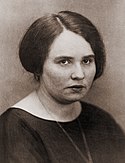| |||||||||||||||||||||||||||||||||||||||||||||||||||||||||||||||||||||||||||||||||||||
All 493 seats in the Reichstag 247 seats needed for a majority | |||||||||||||||||||||||||||||||||||||||||||||||||||||||||||||||||||||||||||||||||||||
|---|---|---|---|---|---|---|---|---|---|---|---|---|---|---|---|---|---|---|---|---|---|---|---|---|---|---|---|---|---|---|---|---|---|---|---|---|---|---|---|---|---|---|---|---|---|---|---|---|---|---|---|---|---|---|---|---|---|---|---|---|---|---|---|---|---|---|---|---|---|---|---|---|---|---|---|---|---|---|---|---|---|---|---|---|---|
| Registered | 38,987,324 ( | ||||||||||||||||||||||||||||||||||||||||||||||||||||||||||||||||||||||||||||||||||||
| Turnout | 78.8% ( | ||||||||||||||||||||||||||||||||||||||||||||||||||||||||||||||||||||||||||||||||||||
| |||||||||||||||||||||||||||||||||||||||||||||||||||||||||||||||||||||||||||||||||||||
| |||||||||||||||||||||||||||||||||||||||||||||||||||||||||||||||||||||||||||||||||||||
| This article is part of a series on the |
| Politics of Germany |
|---|
 |
Federal elections were held in Germany on 7 December 1924 to elect the third Reichstag of the Weimar Republic.[1][2][3]
The elections took place just six months after the previous elections in May due to the political impasse following the passage of the Dawes Plan. The result was a decline in strength for the parties of the far right and far left, the Nazi Party and Communists, who lost 18 and 17 seats respectively. The Social Democratic Party (SPD) made the largest gains, rising to 26%, followed by the radical nationalist German National People's Party (DNVP). The Catholic Centre Party, conservative German People's Party (DVP), and German Democratic Party (DDP) also saw a small upswing.[3]
Following the elections, the balance of power lay with the DVP, who announced they would only join a government of the bourgeois right. This time, negotiations with the DNVP were successful, and in January a new majority cabinet was formed under Hans Luther – an independent close to the DVP – as a coalition between the Centre Party, DNVP, DVP, and Bavarian People's Party.[3] For the following three years, until the collapse of the fourth Marx cabinet in February 1928, Germany was governed by cabinets of this conservative orientation.
- ^ Dieter Nohlen & Philip Stöver (2010) Elections in Europe: A data handbook, p762 ISBN 978-3-8329-5609-7
- ^ Graper, Elmer D. (1925). "The Reichstag Elections". American Political Science Review. 19 (2): 362–370. doi:10.2307/2938928. ISSN 0003-0554. JSTOR 2938928. S2CID 147108053.
- ^ a b c Kolb, Eberhard (2004). The Weimar Republic. Translated by Falla, P. S.; Park, R. J. New York City: Routledge. p. 74. ISBN 0415344417.








